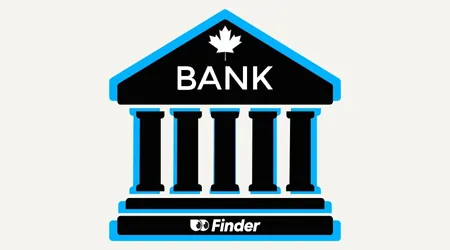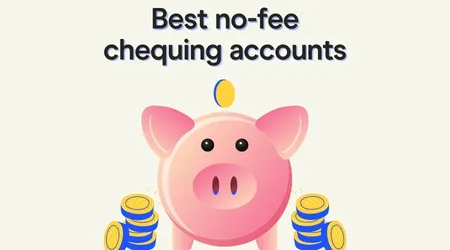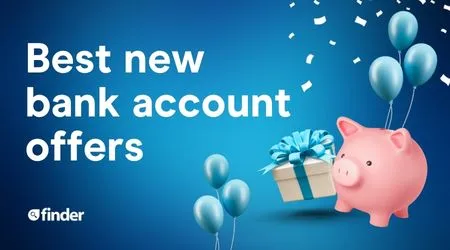
Banking statistics and trends in Canada for 2025
Explore key banking statistics and figures from the Finder: Consumer Sentiment Survey January 2025.
Read more…You work hard to save money and trust your bank to keep it safe in your savings account. But what happens if the bank were to go bankrupt? Learn more about the Canadian Deposit Insurance Corporation (CDIC), how it protects your deposits in CDIC-insured institutions and compare bank accounts with CDIC protection.
The Canadian Deposit Insurance Corporation (CDIC) is a federal crown corporation that guarantees deposits up to $100,000 in CDIC-member institutions. This means that if the institution were to collapse or fail, you would be fully reimbursed up to $100,000.
CDIC deposit insurance covers a multitude of accounts, including:
The CDIC does not guarantee any of the following funds:
To make comparing even easier we came up with the Finder Score. Welcome offers, account fees and features across 60+ chequing accounts and 25+ lenders are all weighted and scaled to produce a score out of 10. The higher the score the better the account - simple.
To make comparing even easier we came up with the Finder Score. Interest rates, account fees and features across 50+ savings accounts and 25+ lenders are all weighted and scaled to produce a score out of 10. The higher the score the better the account - simple.
The $100,000 limit applies per depositor, per institution and per insured category. Insured category simply refers to whether the account is owned by one person (single), is shared (joint), or held in a RRSP, RRIF, TFSA, or in trust. RESPs and RDSPs will also be eligible for coverage beginning in April 2021. Depending on the size of your deposits, it might make sense to hold accounts at different institutions to ensure that all of your money is covered.
Consider the situation below where someone holds $25,000 in a savings account, $50,000 in a chequing account, and $75,000 in a GIC, at one bank. In that case, the CDIC would cover a total of $100,000, so $50,000 won’t be covered.
| Savings account deposit | $25,000 |
| GIC account deposit | $75,000 |
| Chequing account deposit | $50,000 |
| Total of uninsured deposits | $50,000 |
Yes – as long as your deposits don’t exceed $100,000 at each bank. Let’s say you have $100,000 in savings and GICs at one bank and $100,000 in your chequing account at a different bank. In the event that both banks failed, all of your money would be insured.
| Bank 1: Savings account deposit | $50,000 |
| Bank 1: GIC account deposit | $50,000 |
| Bank 2: Chequing account deposit | $100,000 |
| Total of uninsured deposits | $0 |
At one bank, let’s say you have $50,000 in GICs, $25,000 in a joint chequing account and $25,000 in a single savings account. If the bank were to fail, all of your money would be insured since you hold less than $100,000 in each ownership category.
| Personal account: Savings account deposit | $25,000 |
| Personal account: GIC account deposit | $50,000 |
| Joint account: Chequing account deposit | $25,000 |
| Total of uninsured deposits | $0 |
CDIC-member institutions often display a CDIC sign at branches, but you can also see the full membership list of CDIC institutions here.
No. CDIC Canadian deposit insurance automatically applies to deposits at CDIC-member institutions, so you won’t need to apply or take any further steps. As long as your funds are deposited at an institution that is CDIC-insured, you will be covered for up to $100,000 in the event that the institution fails.
Are you still protected under the guarantee if your bank goes bankrupt? Yes. If your institution is CDIC-insured and it goes bankrupt, you are protected up to the $100,000 insured limit by this Canadian bank insurance.
The CDIC has many policies in place governing the operation of member institutions helping to prevent any failure. But, if your bank were to fail, the CDIC would attempt to sell existing deposits and loans to a more stable institution or look at the possibility of amalgamating with another institution. If this happens, your accounts would be transferred to the new bank and you would retain access to your money. If any further action is required, you would be contacted by the CDIC.
Response | Saskatchewan | Prince Edward Island | Ontario | Nova Scotia | Newfoundland and Labrador | New Brunswick | Manitoba | British Columbia | Alberta |
|---|---|---|---|---|---|---|---|---|---|
| Yes | 77.5% | 80% | 71.43% | 61.76% | 50% | 84.62% | 69.57% | 70.81% | 77.03% |
| No | 22.5% | 20% | 28.57% | 38.24% | 50% | 15.38% | 30.43% | 29.19% | 22.97% |
The CDIC was created in 1967 to protect eligible deposits and ensure the flow of the Canadian financial system. It has handled 43 failures affecting more than 2 million depositors since its inception. In fact, there hasn’t been a single depositor that has ever lost a single dollar of insured deposits since the CDIC was created.
There are a few different ways banks make money.
A bank fails when they can no longer meet their obligations to depositors. Some common reasons include:
Even though your money is often protected by Canadian deposit insurance, bank accounts still have a number of vulnerabilities.
Most savings accounts in Canada are offered by banks that carry CDIC’s Canadian deposit insurance and bank account protection. So as long as the bank you choose is a CDIC-member institution and your deposits fall under an insured category your money will be protected even if the institution goes belly up. Generally speaking, that assurance can free you up to focus on comparing savings accounts that best meet your financial needs, like those that offer a competitive interest rate, low or no fees, low or no minimum balances and convenient ways to access your money.

Explore key banking statistics and figures from the Finder: Consumer Sentiment Survey January 2025.
Read more…
Compare the features of 8 of the best no-fee chequing accounts in Canada, and find out how to avoid transaction fees.
Read more…
Earn cash, rewards points, bonus interest rates and more with these new bank account offers and promotions.
Read more…
Learn about the different types of bank accounts for your teenager and how to choose the right one.
Read more…
Compare chequing accounts and learn about our top picks. Compare different features and see which one is right for you.
Read more…
Compare and open a bank account online in Canada in as little as 5 minutes. Learn what you need to apply and how to get started today.
Read more…We compare Canada’s best banks to help you find your perfect banking match.
We compare EQ Bank and Wealthsimple head to head to see how their banking products and services stack up against one another.
Compare Simplii Financial vs CIBC to find the best digital bank in Canada for you.
Compare Simplii vs KOHO to see which digital bank best suits your everyday financial needs.
Simplii and EQ Bank go head to head on fees, features, rates and mobile apps.
Compare EQ Bank vs KOHO to find the best digital bank in Canada for you.
Your guide to the 6 best Koho alternatives in Canada.
Earn cash, rewards points, bonus interest rates and more with these new bank account offers and promotions.
Compare Tangerine and EQ Bank to find the best digital bank in Canada for you.
From mortgages to high-interest savings accounts, here’s how to find the best interest rates in Canada.